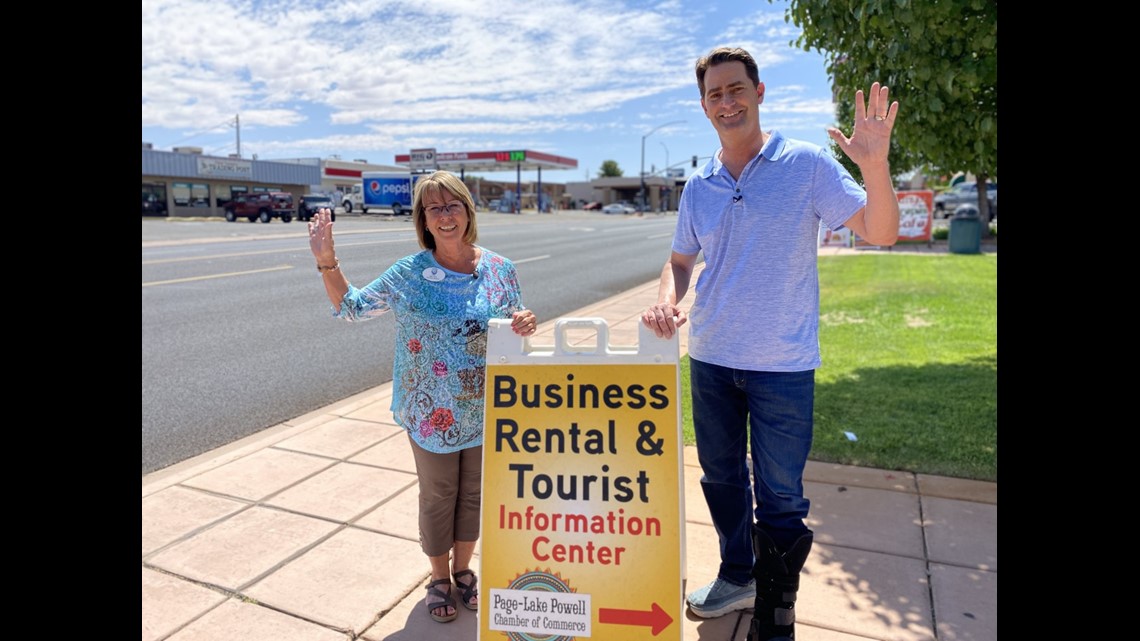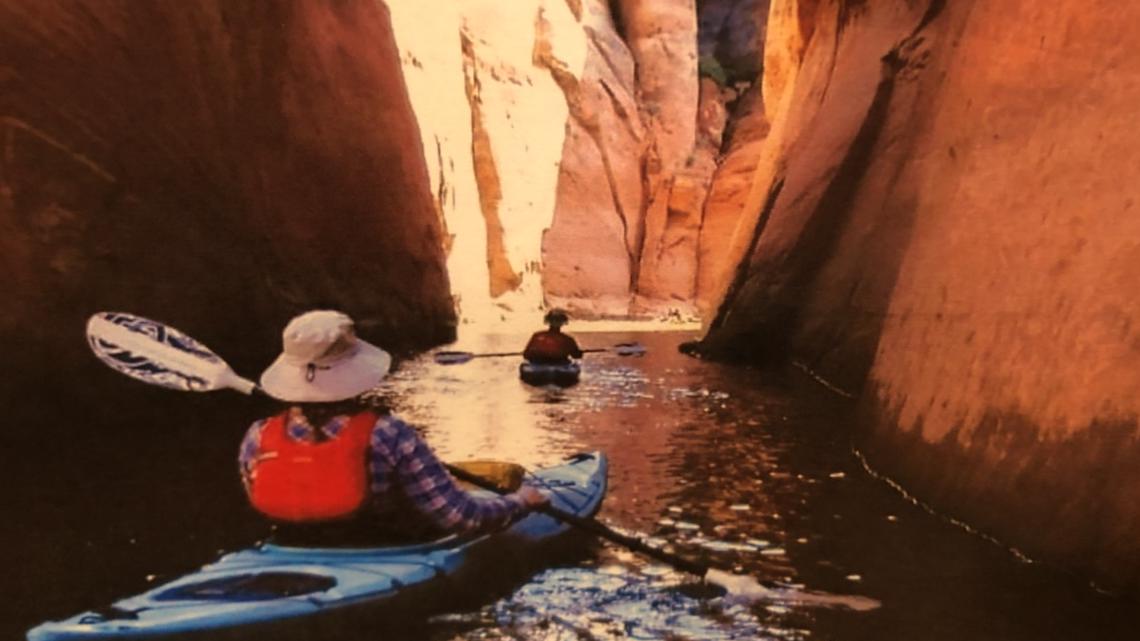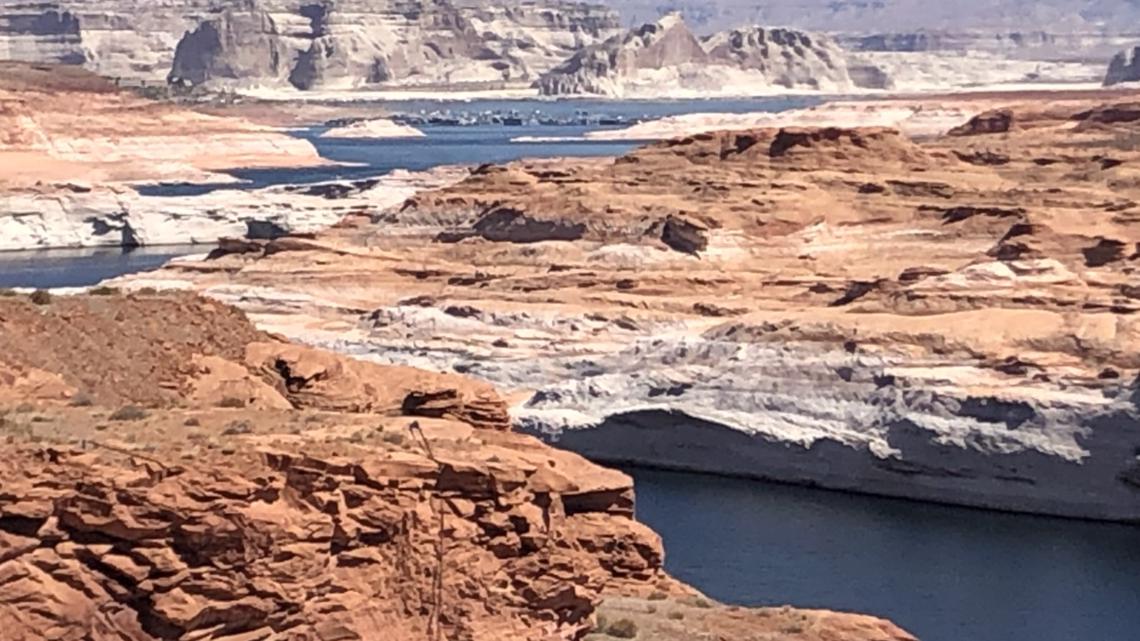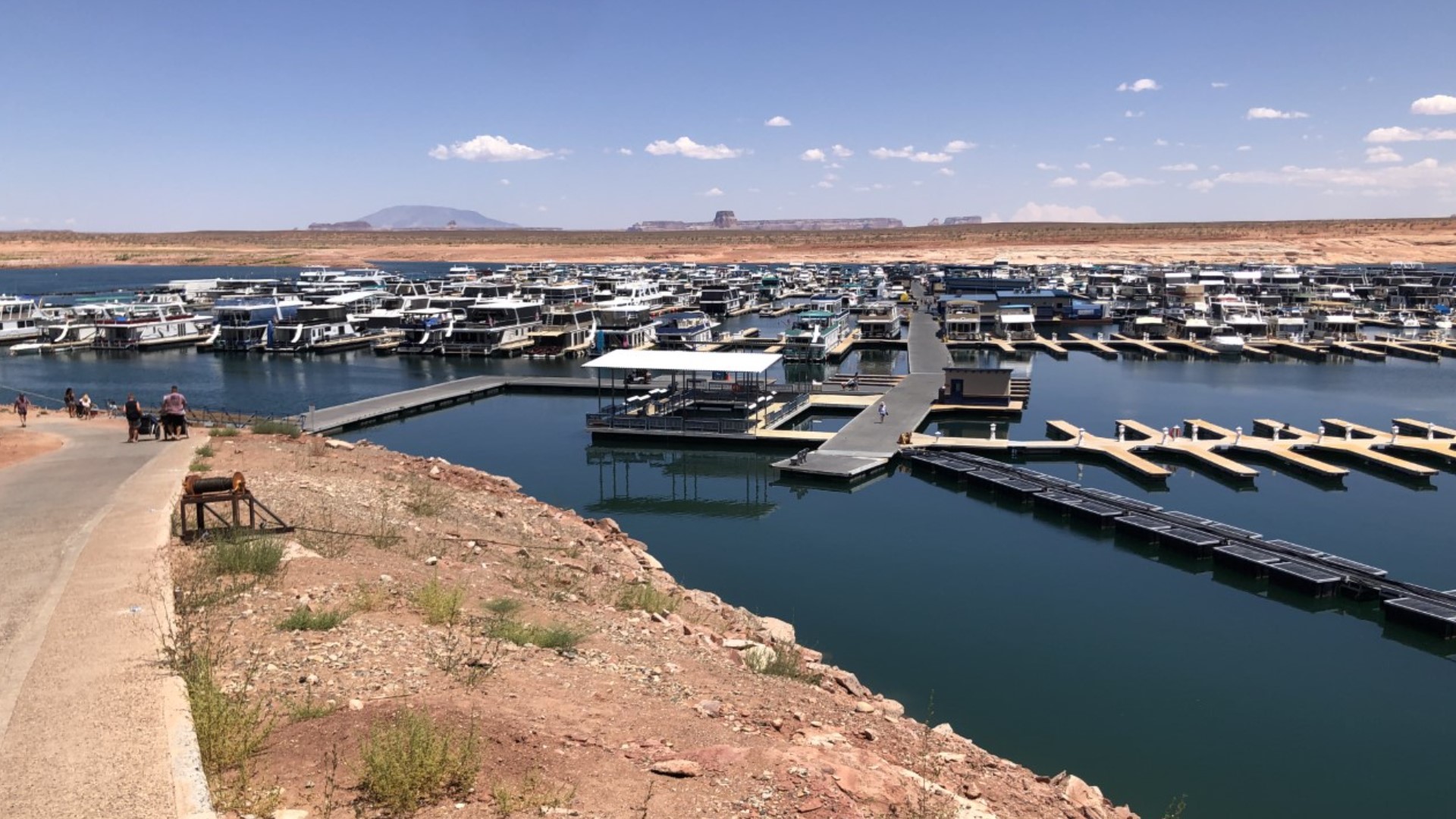PAGE, Ariz. — An Exceptional Drought has been declared in the Western United States. Extreme summer heat and a lack of Rocky Mountain runoff is affecting agriculture, livestock, and critical drinking water supplies for millions of people. In part three of a three-part series, reporter Jeff Zevely visits Page, Arizona, a town that depends on water and tourism to survive.
The small town has a population of 8,250. In 2019, an estimated four million people visited Page. The town was founded in 1957 to build a dam and supply the Southwest with water and electricity. Lake Powell is the town's lifeline.
The Western states are experiencing an Exceptional Drought which is the highest category of drought. An Exceptional Drought is classified as a D4 which means it can create widespread crop and pasture losses, fire risk, and water shortages that result in water emergencies. A water emergency is any disruption of clean water to a person's home.


"I don't see it getting better. It's just getting worse," said Keegan Murphy who works for Hidden Canyon Kayak.
We found him dragging kayaks on concrete because the nearest parking lot was a football field away from Lake Powell's shoreline.
"This is why they can't launch [power]boats here because all of this would be underwater last year. All of it," said Keegan.
Powerboats can launch at Lake Powell but not at the Antelope Point boat ramp. Keegan told us just putting a small boat in the water is a challenge.
"If the water drops another five feet you can see the rock ledge there. We won't be able to do tours unless you can do what's called the seal launch. It's like you run with your kayak and jump on it because after that ledge there is about a 25-foot drop. You could do kayaking, it would just be very dangerous," said Keegan.
The lake level may be down, but the houseboat business is booming. At Wahweap Marina, near Page, houseboats are already in the water. When the lake level drops, the houseboat docks are lowered as well.
During our stay, most of the boat rentals were sold out.
"Plenty of water in our lake and we are ready to go," said Judy Franz who is the executive director of the Chamber of Commerce in Page, Arizona.
We asked Franz if she was concerned about the drought.
"No, there is 450 feet water in there. Yes, we've had some issues with our ramps, but they are working on that," said Franz.


Judy went on to tell us that despite the drought, Page is open for business and the tourists are back in strong numbers following COVID-19 travel restrictions. To help support tourism, Page, Arizona has a beautiful golf course. The lush fairways are kept green by using reclaimed water.
Page was founded in 1957 to support the construction of the Glen Canyon Dam. Since then, eight hotels and 28 restaurants have followed.
"We are always hopeful here. That's the thing - we never ever get negative in Page," said Franz.


Lake Powell is projected to drop to its lowest level since the second-largest man-made reservoir in the nation was filled in the 1960s. The Southwest needs more rain and snowfall. The lake's bathtub ring and the discoloration of rock tell a story. Since the early 1980s, the lake has dropped 150 feet, but a lowering water level has uncovered several shipwrecks for visitors to explore and more.
"What people don't realize is that with the water going down we have unbelievable beaches now that never were there. So, all of sudden there's all of these beaches and it's gorgeous and people are saying 'oh my goodness, there is stuff we have not seen for years,'" said Franz.
As beautiful as Lake Powell is to look at, the reservoir was not created for tourism.
"Thirty million people are relying on this water downstream," said Bryan Hill who is the general manager of Page Utility Enterprises. "The lake being low is having an economic impact."
But even if Lake Powell and tourism suffer, Hill isn't worried about Page running out of water. He is concerned about waters users downstream.
"If you can picture a bathtub in your bathroom we get a teaspoon, maybe half a teaspoon. So even though we are watching this bathtub go down we believe we are always going to get our teaspoon or half a teaspoon out of this thing, but what is disturbing is the 30 million people down below us here who are relying on this," said Hill.
RELATED: Gov. Newsom asks Californians to voluntarily cut water use amid deepening drought conditions
So, what would happen if Lake Powell dried up?
"It would kill 50 to 60% of the businesses in town," said Franz.
For those living below Lake Powell, being mindful of every drop, won't just save water but possibly a town.
"Do your best, take quick [showers.] I don't know, don't water your lawn as much, just water for what you need it for," said Keegan Murphy.
Earlier this summer the San Diego Water Authority announced San Diego County's water supply is secure through 2045 without water mandates, but Governor Gavin Newsom has asked all Californians to voluntarily cut back on their water usage by 15%.
For more information on visiting Lake Powell and Page, Arizona please click here.

